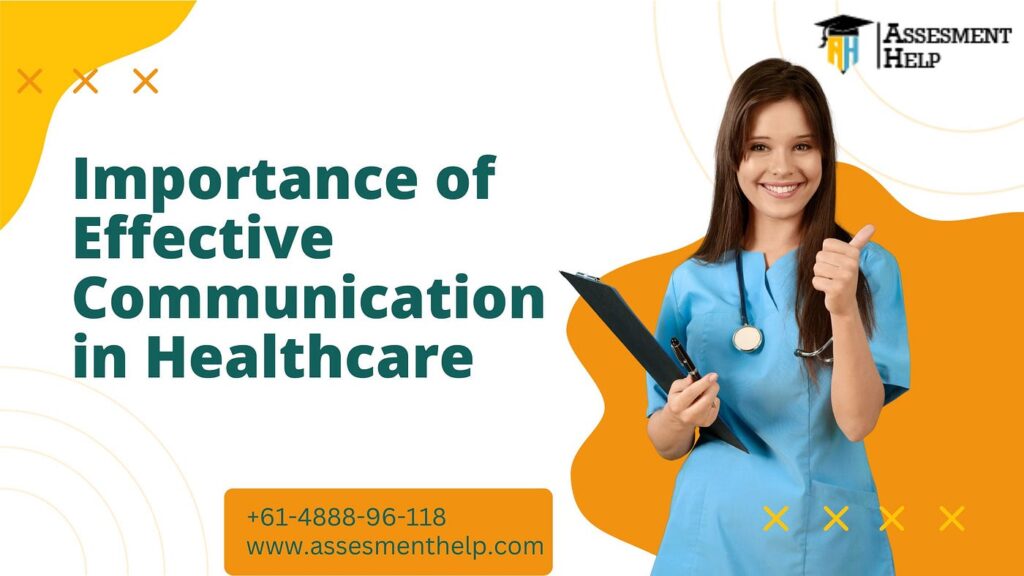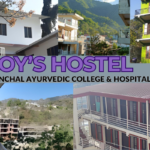Introduction
Through the dynamic health care landscape, effective communication is becoming highly vital. For a medical students it is no longer about what he or she needs to learn in terms of medicine or technical skills, but also of how to reach one’s patient at a personal level. Good communication has been noticed to be the bedrock on which strong doctor-patient relationships thrive, which can be crucial towards achieving successful diagnoses, treatment adherence, and general patient satisfaction.
It happens that a doctor’s office turns out to be the place where you are going to meet in order to get addressed your growing health-related anxiety. You would like to express your increasing anxiety but the doctor appears to be doing something else, speaking jargon instead of clearing up your confusion. Now compare this to one in which a patient walks into a clinic where their healthcare provider takes the time to listen, understands the problem and communicates clearly. This does make a great deal of difference in the degree by which the clinician’s actions can change upon the patient’s experiences, compliance, and therefore, health.
The time a medical students is in has been very transitional because it is at such a stage where they can cultivate their communication skills before catapulting into the labor market. It is at such a foundational stage where they lay down their education that will shadow them all their professional careers. To establish effective skills in communication, it is not only a need for academics, but it supports compassion with competence.
We look at various techniques and methods that medical students take in order to ensure that patients have something to share. From active listening to using empathy, it is well known in the public domain that these skills are part and parcel of an arsenal which forms a very vital arsenal of creating an environment of support and trust by which people are willing to air concerns. As such, medical students can be assured that their time and energy in developing those skills will pay them back by making them not only perfect health caregivers but also compassionate caregivers, leaving long-lasting impacts in other people’s lives.

1. The Role of Communication in Health Care
Before explaining the methods for good communication, it is important for the students to know why good communication is necessary. Good communication pays off as follows:
Better Patient Satisfaction: Patients who are heard tend to be satisfied with their care.
High Adherence to the Treatment Plan: If a patient knows what is happening, there is more likely to be adherence.
Efficient communication also culminates in the collection of a more reliable patient history, thereby enhancing diagnostic precision.
2. Improving Active Listening
Active listening is one of the most important elements to present a clear message. For medical students, this translates into completely listening to the patient and not at all on what you’ll ask him. Here’s how to develop your active listening skills:
Eye contact: Sufficient eye contact helps the patients know that you completely focus on them.
Non-verbal: The advisor is encouraging, nodding and smiling.
Reflective listening: paraphrase or summary of what the patient has said to confirm understanding: “It sounds like you’re experiencing a lot of pain in your back.
3. Developing Empathy
Empathy is the ability to understand and share another’s feelings. The first thing a medical students does in trying to establish rapport with a patient is develop empathy. It works like this:
Acknowledge Emotions: Acknowledge the feelings of the patient, if the patient fears or worries about something. Long time phrases such as “I understand that this can be frightening” would help greatly.
Use Patient Stories: Ask patients to tell their own experiences. This will help the medical students empathize with them better.
Try to Walk in Their Shoes: Try to be in the same situation as the patient.

4. Easy and Vague Terminology
Patients are very weak in understanding the medical terminology. Medical students should try to express their views in easy, understandable language. Here are the suggestions made on this basis:
Do Not Use Jargon: Use common terms or phrases if you need to explain any diseases or drugs.
Use Analogies: Explain complicated medical students concepts using concrete everyday experiences. Example: You can use an example of how to describe a blood pressure cuff as the “squeezer” that would determine how hard you were working.
Check for Understanding: Ask the patient to elaborate in their own words what you have said. This helps him/her understand why they’re going through treatment the way he is, and what he has.
5. Establishing Trust
Trust is an essential requirement of a successful patient-physician relationship. In fact, trust can be built among medic students by several practices:
Consistency: Be consistent with your attitude and facts. This builds trust.
Transparency: Explain clearly diagnoses, treatment alternatives, and prognosis. If you do not know the answer to a question, it is safer not to guess than to give an incorrect response.
Confidentiality: Let patients know that their information will be confidential-this also helps them feel safe.
6. The Role of Non-Verbal Communication
Non-verbal communication can say as much as a verbal communication. Medical students should be aware of the body language, tone, and facial expression. Here is how to make proper use of non-verbal cues:
Posture: Open your posture. Try not to cross arms, which shows an open and non-guarded state.
Tone of Voice: Your voice says more than the words do. You can even control how the information or message is received. A soothing and comforting voice can soothe patients.
Facial Expressions: Ensure your facial expression matches the message.
7. Culturally Sensitive Training
In this multi-cultural world, awareness of cultural diversity is an important aspect. Students who are in the medical students field must practice cultural competence by:
Being Informed: Educate yourself about the patients’ cultural backgrounds. You will see cultural beliefs in helping you make communicate appropriately with your patients.
Ask Respectfully: Be unsure and ask patients about their preferred modality for communication and care. For instance, you can simply say, “How would you like me to approach this?” This will show respect for their beliefs .

8. Using Technology to Build Effective Communication
In the digital age, technology can be an effective player in facilitating communication. Therefore, medical students must be familiar with most of the tools, including but not limited to:
Patient Portals: Activate patients in the use of online portals to access health information, make appointments, and communicate with healthcare providers.
Telemedicine: With the increased practice of telemedicine encounters, the communication skills of medical students should be molded to fit a virtual setting but will not compromise having a personal approach.
9. Role-Playing Activities
Role-playing has been a good activity to hone the communication skills of medical students. These role-plays can help:
Prepare for Real-Life Situations: Role-playing enables the students to deal with awkward conversations in a safe environment, as giving bad news or thinking of sensitive topics
Receive Feedback: Peers and instructors can give constructive feedback, which helps refinement of the approach.
10. Continuous Improvement and Feedback
The art of communication is a skill that can always be learned and improved upon. Medical students should look for as much feedback as possible from peers, mentors, and patients on how they can improve. For that, here are some strategies that contribute to continuous improvement:
Reflect on Interactions: One should take some time right after the patient encounter to consider what went right and what could be improved.
Seek Mentorship: Taking knowledge from experienced practitioners gives priceless insight into the respective communication strategies.
Conclusion
It is at such points that ending with a conclusion in regard to the skills that require a medical students attaining throughout such training will produce satisfactory outcomes with regard to the ability of bringing about effective communication with a patient is quite important. As the communications are enhanced through active listening, empathizing, speaking clearly, and working to establish trust, the better relating with the patient does yield positive healthcare results.
The strategies outlined will help medical students prepare for successful health careers, which means that mastering communication is a continuous journey. With good communication skills, they will be able to do much more to understand and serve the needs of their patients, and healthier communities with stronger doctor-patient relationships will be realized.
FAQs
Q1. Why is it relevant for medical students to have good communication?
Effective communication results in better patient outcomes, greater satisfaction for both parties, and better adherence to treatment plans.
Q2. How can I become an active listener?
Pay attention to the speaker, maintain eye contact, and use verbal qualifiers to demonstrate the existence of interest
Q3 What is the role of empathy in patient care?
Empathy sets a basis for rapport and trust, and it facilitates open communication and understanding of concerns on the patient’s side.
Q4: What can I do to improve my non-verbal communication?
To do this, pay attention to your body language, pitch, and facial expressions, and ensure they coincide with the oral message delivered.
Q5. Resources to develop communication skills?
Yes, workshop options, online courses, and role-plays are available to help you develop your communication skills.







